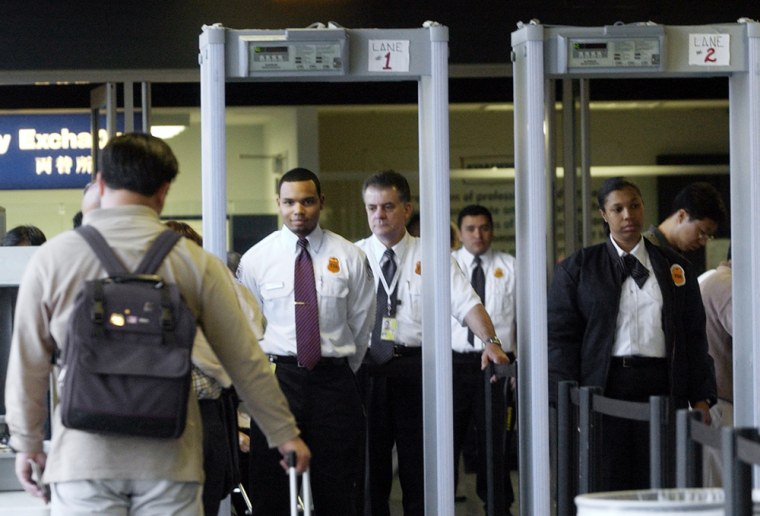The government will add security screeners at dozens of airports to reduce long waits for passengers. The number of screeners will shrink at others.
Dallas-Fort Worth, Miami, New York’s JFK and Washington Dulles are among airports that will get at least 100 more screeners. Pittsburgh will lose the most: 45.
The Transportation Security Administration is trying to come up with the right number of screeners at 445 commercial airports as the busy summer travel season approaches.
U.S. air carriers expect 65 million passengers in each summer month. That’s 12 percent more passengers per month compared with last summer.
Lower total headcount
This is the third time the TSA has reallocated screeners since it staffed every airport with federal workers Nov. 19, 2002. Previous changes came about because Congress reduced the number of full-time screeners the agency could employ to 45,000 from about 60,000.
Mark Hatfield, TSA spokesman, said the agency will continue to fine-tune staffing levels at airports.
Some airports will get more screeners because they have experienced long lines at checkpoints. Those include Dallas-Fort Worth International Airport, Newark Liberty International Airport, Miami International Airport, New York’s John F. Kennedy International Airport, Orlando International Airport and Washington Dulles International Airport.
Others will lose screeners because they have too many. Among them are Pittsburgh International Airport, Piedmont Triad International Airport in North Carolina, New Orleans International Airport, Jacksonville Airport and Cleveland Hopkins International Airport.
“We’re hoping to achieve those through attrition in the coming months,” Hatfield said.
Some on military duty
Rep. John Mica, chairman of the House aviation subcommittee, said the TSA has as many as 5,000 screeners who are not working because they’ve been called up for military duty or are out on workers’ compensation. Those workers count against the 45,000-person cap.
“We need to figure out how to deal with that,” said Mica, R-Fla.
David Plavin, president of the airport trade group Airports Council International-North America, said the fledgling agency has shown it has too little experience in airport management to know how to staff screening checkpoints.
“It doesn’t strike me that the federal government has figured out a way to be flexible enough to have enough people there when the passengers are there,” Plavin said. Airports need more seasonal and part-time workers to cope with changes in traffic, he said.
Doug Wills, spokesman for the Air Transport Association, said the airline trade group isn’t certain how TSA came up with its staffing formula.
“We, in general, felt that more staffing decisions should be made at the local federal security director level,” Wills said.
The group is uneasy that centralized hiring decisions made in Washington result in long delays in hiring screeners.
Hatfield said federal security directors who manage the screeners helped make the decision on how many screeners to allocate.
The full list of reallocations by airport is online at www.tsa.gov.
